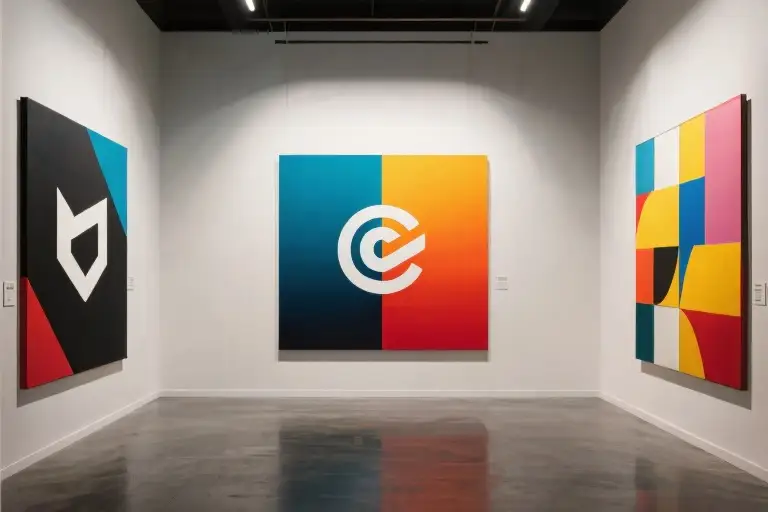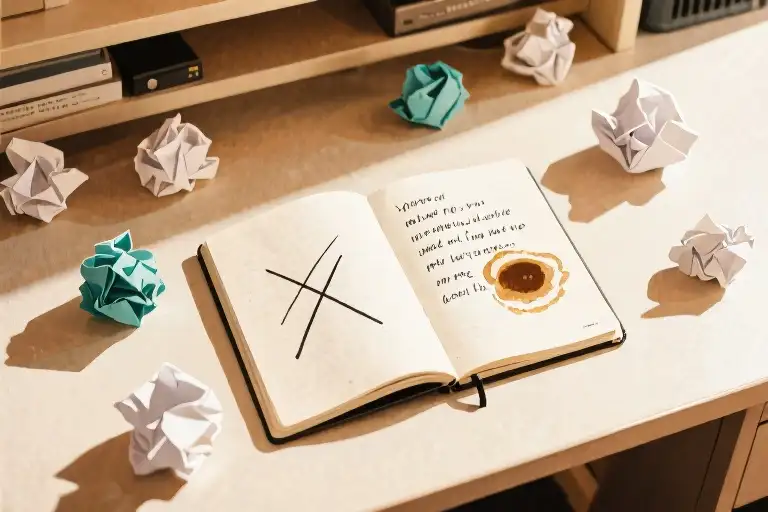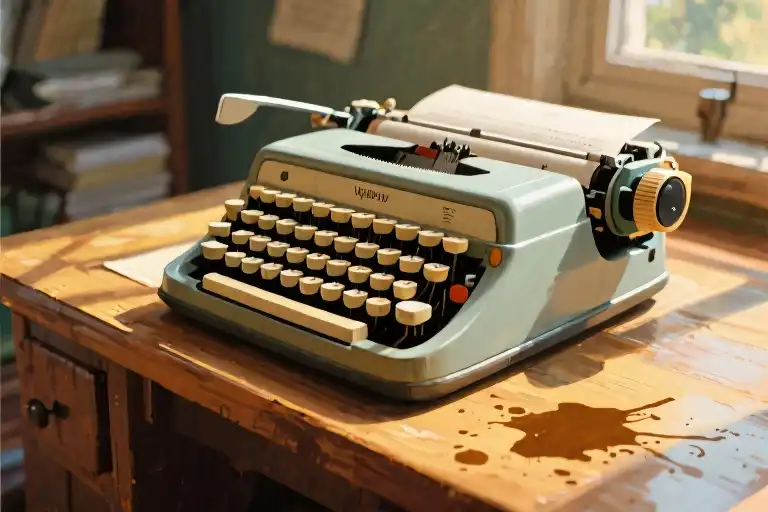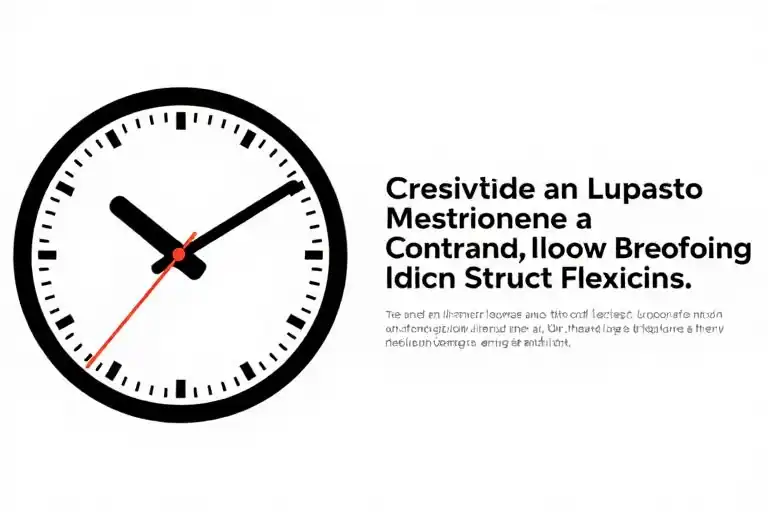Let’s begin with a revealing experiment. Close your eyes and visualize a tube of toothpaste. What appears in your mind’s eye? For most, it’s likely a familiar red-and-white striped design or a minty-blue variant with bold typography—visual cues synonymous with Colgate or Crest. This isn’t random recall; it’s the outcome of decades of strategic brand dominance where legacy players didn’t just win shelf space but rewired our collective imagination.
These brands achieved something extraordinary: they became the default mental shorthand for entire categories. Need a bandage? It’s a Band-Aid. Craving soda? Coca-Cola comes to mind. This phenomenon, known as genericization, was the ultimate marketing triumph of the 20th century—where brand names eclipsed product categories themselves.
Yet here’s the paradox: while these titans still own our subconscious associations, consumer behavior has radically evolved. Modern buyers no longer choose products based solely on function or price. Your toothpaste isn’t just judged by its cavity-fighting abilities; it’s scrutinized for its environmental stance, packaging aesthetics, and whether its brand story aligns with personal values. A 2024 McKinsey study revealed that 66% of Gen Z consumers prioritize cultural alignment over convenience when selecting brands.
This shift exposes the limitations of traditional marketing playbooks. Data-driven tactics—A/B tested CTAs, conversion-optimized landing pages, and demographic-targeted ads—may drive clicks, but they rarely inspire devotion. In an era where consumers wear brands as identity badges, businesses face a pressing question: How do you break through when old rules of engagement no longer apply?
The answer lies in an unexpected ally—one that predates marketing departments and focus groups by centuries. It’s not a new tech stack or viral hack, but something far more foundational: art. Not as superficial decoration, but as the core language through which brands can articulate their purpose, build cultural relevance, and foster communities that transcend transactional relationships.
Consider this piece your roadmap to art-driven branding—a strategic approach where creativity isn’t confined to advertising campaigns but permeates every touchpoint of your brand’s existence. We’ll explore how Renaissance patrons pioneered this mindset, why Absolut Vodka’s artist collaborations outperformed traditional ads, and how emerging brands like Jacquemus and Aime Leon Dore are rewriting the rules of cultural engagement. More importantly, you’ll discover actionable frameworks to:
- Reframe brand identity as an artistic practice rather than a corporate exercise
- Forge meaningful partnerships with artists that go beyond token collaborations
- Cultivate communities that participate in your brand’s evolution
- Embed cultural codes that make your brand a movement, not just a merchant
The most enduring brands have always understood this truth: commerce thrives when it intersects with culture. Now, it’s your turn to wield that insight—not as a marketer, but as a modern-day Medici shaping the next chapter where art and enterprise dance in lockstep.
The Monopoly of Legacy Brands and the Awakening of New Consumerism
For decades, household names like Colgate, Band-Aid, and Xerox didn’t just dominate supermarket shelves—they rewired our collective consciousness. These brands achieved something far more powerful than market share: they became synonymous with entire product categories. When you imagine toothpaste, adhesive bandages, or photocopies, their logos and colors automatically surface in your mind. This phenomenon wasn’t accidental; it was the result of strategic, long-term brand dominance that turned proprietary names into generic terms.
How Legacy Brands Hijacked Our Vocabulary
Consider these everyday substitutions:
- Colgate instead of toothpaste
- Band-Aid replacing adhesive bandage
- Xerox standing in for photocopy
- Sharpie becoming magic marker
This linguistic takeover created an almost impenetrable moat for competitors. Throughout the 20th century, emerging brands had little choice but to imitate the visual language and positioning of these category leaders. The prevailing strategy? If you can’t beat them, at least look like them.
The 2024 Consumer Mindset Shift
Fast forward to today, and the rules of engagement have fundamentally changed. Recent consumer behavior studies reveal a dramatic transformation:
- 66% of Gen Z consumers choose brands based on shared values rather than product features (2024 Cultural Consumer Report)
- 58% of millennials would switch to a lesser-known brand if it better represented their identity (Edelman Trust Barometer)
- 73% of luxury shoppers prioritize “story worth telling” over technical specifications (Bain & Company)
This data signals a pivotal shift from functional purchasing to identity expression. Your toothpaste choice no longer just fights cavities—it communicates your environmental stance, your aesthetic preferences, and even your social consciousness.
The Limits of Data-Driven Marketing
In response to these changes, many brands have doubled down on scientific marketing approaches:
- Hyper-targeted digital ads
- Algorithmically optimized product recommendations
- Relentless A/B testing of every visual element
Yet these tactics often lead to what we might call “the sameness epidemic”—a sea of brands with nearly identical:
- Minimalist packaging
- Sans-serif logos
- “Authentic” founder stories
- Neutral color palettes
The irony? In their quest to data-optimize every decision, these brands have sacrificed the very differentiation consumers now crave. As conversion rates plateau and customer acquisition costs soar, a critical question emerges: When consumers increasingly view purchases as personal statements, can spreadsheets alone create meaningful brand connections?
The Art of Standing Apart
This brings us to the central tension of modern branding: the collision between scientific marketing and artistic expression. While data helps refine your message, it’s art that makes that message worth hearing. Consider:
- Package design that feels like gallery-worthy art
- Brand narratives with the depth of literary fiction
- Retail spaces that function as immersive installations
These elements don’t just sell products—they create cultural moments. They transform customers into advocates and transactions into relationships. As we’ll explore in subsequent sections, this artistic approach isn’t new; it’s actually a return to branding’s historical roots, updated for today’s values-driven marketplace.
Key Takeaways:
- Legacy brands achieved dominance by becoming category synonyms, but this strategy loses potency in today’s identity-driven market
- Modern consumers choose brands as personal statements, with 66% prioritizing values over functionality
- Over-reliance on data-driven marketing often produces generic brands that fail to inspire loyalty
- Artistic differentiation—not scientific optimization—may hold the key to breaking through in saturated markets
The 500-Year Symbiosis of Art and Commerce
When Patrons Became the First Brand Strategists
Long before Mad Men dominated Madison Avenue, the Medici family of Renaissance Florence mastered the art of brand building through cultural patronage. Their secret? Treating artists not as hired hands, but as co-creators of legacy. When Cosimo de’ Medici commissioned Filippo Brunelleschi’s Duomo dome in 1436, he wasn’t just funding architecture—he was crafting Florence’s skyline as his family’s permanent logo.
This wasn’t philanthropy; it was calculated cultural entrepreneurship. By bankrolling Botticelli’s The Birth of Venus, the Medicis didn’t simply acquire art—they associated their name with beauty, power, and divine favor. The painting’s seashell motif became their brand iconography centuries before visual identity systems existed.
Industrial Age: When Art Met Mass Production
The 19th century brought an unlikely marriage between artistic expression and industrial scale. Henri de Toulouse-Lautrec’s lithographic posters for Moulin Rouge didn’t just advertise cabaret shows—they turned nightlife into collectible art. His distinctive style, characterized by bold outlines and flat colors, became the brand language of Parisian bohemia.
Fast forward to 1985: Absolut Vodka’s marketing team made history by treating their bottle as a blank canvas. Their collaboration with Andy Warhol wasn’t a one-off campaign but the start of a 1,500-artist portfolio that boosted brand recognition by 300%. The lesson? Consistent artistic partnerships can transform commodity products into cultural artifacts.
Modern Masters of Artistic Branding
Contemporary brands continue this tradition with sophisticated twists:
- Chanel × Salvador Dalí (1937)
- The surrealist designed boutique displays and perfume bottles, embedding avant-garde credibility into Chanel’s DNA
- Key takeaway: Early artistic collaborations establish lasting brand associations
- Supreme × Takashi Murakami (2007)
- The streetwear brand’s rotating artist series turned limited drops into cultural events
- Pro tip: Treat collaborations as membership tokens for your brand’s subculture
- Gucci × Coco Capitán (2017)
- Handwritten poetic phrases across merchandise created instant visual distinction
- Strategy: Use artist partnerships to develop proprietary design languages
The Unbroken Thread
From Medici palazzos to Murakami-designed skateboards, the most enduring brands share one trait: they approach commerce as cultural production. When Absolut commissioned Warhol, they weren’t buying ads—they were collecting cultural equity. As you consider your own brand’s artistic direction, ask: Are we creating transactions or cultural touchstones?
“Art patronage is the original growth hacking—except the ROI compounds across centuries.”
This historical perspective sets the stage for our next chapter, where we’ll decode how emerging brands like Jacquemus and Glossier are rewriting these ancient rules for the digital age.
Crafting an Art-Driven Brand Identity
Think Like an Artist, Not a Spreadsheet
Most startups approach branding like a checkbox exercise—slapping a logo on generic packaging after finalizing their product. But in today’s market, your brand identity isn’t just packaging; it’s the product itself. When consumers increasingly make purchases based on emotional resonance rather than functionality, every color choice, typography decision, and visual motif becomes a storytelling device.
Take Jacquemus as a masterclass. Simon Porte Jacquemus didn’t just create clothing; he built an immersive Provençal universe through:
- Color psychology: Wheat-field yellows and Mediterranean blues that evoke nostalgia
- Material storytelling: Raw linen textures mirroring Southern French landscapes
- Scale play: Oversized hats and miniature bags as wearable art pieces
The result? A brand recognized instantly without logos—a rarity in fashion’s crowded space.
The 5 Artistic Elements Every Brand Needs
- Signature Color Palette (e.g., Tiffany Blue patented as PMS 1837)
- Tactile Experience (Glossier’s millennial pink packaging with velvety finishes)
- Visual Motifs (Gucci’s recurring bee symbolism)
- Sonic Branding (Mastercard’s melodic logo sound by Bensimon Byrne)
- Movement Language (Apple’s fluid UI animations)
Pro Tip: Create a brand “mood board” before designing logos. Collect textures, artworks, and photographs that embody your ethos—just as artists prepare sketches before painting.
Beyond Collabs: Artist Partnerships That Matter
The Three Tiers of Artistic Collaboration
| Level | Engagement | Example | ROI |
|---|---|---|---|
| 1. Commissioned Work | Artist executes your brief | Warhol for Absolut | Brand lift |
| 2. Co-Creation | Joint creative development | Yayoi Kusama × Louis Vuitton | Cultural credibility |
| 3. Full Autonomy | Artist reinterprets your brand | Takashi Murakami for Supreme | Subcultural cachet |
Avoiding the Pitfalls
A streetwear brand once lost $2M by:
- Micromanaging a graffiti artist’s designs
- Ignoring the artist’s audience demographics
- Failing to align the drop with urban culture events
Solution: Use our artist partnership scorecard:
- Does their style authentically complement your brand DNA? (Yes/No)
- Will their audience overlap with your target market? (Minimum 30%)
- Are you granting creative freedom? (At least Tier 2 collaboration)
From Customers to Cult Followers
The Participation Ladder
graph TD
A[Passive Consumers] -->|User-Generated Content| B[Active Contributors]
B -->|Co-Design Programs| C[Brand Ambassadors]
C -->|Community Moderation| D[Cultural Stakeholders]Glossier’s genius? They turned makeup routines into social rituals:
- Phase 1: Customers post #GlossierHaul selfies
- Phase 2: Top contributors design limited editions
- Phase 3: Superfans host IRL “Glossier Meetups”
The Aime Leon Dore Playbook
This NYC label built hype not through ads, but by:
- Hosting free jazz nights at their stores
- Publishing a cult-followed coffee table book series
- Letting local artists customize their signature sneakers
Key Metric to Track: Look for “brand hijacking”—when customers start creating unauthorized merch or memes about your product.
Becoming a Cultural Artifact
Case Study: Nike’s Swoosh Semiotics
What began as a $35 logo design evolved into:
- 🎨 Art Symbol: Featured in Kehinde Wiley paintings
- 🎶 Music Icon: Name-dropped in 1,200+ hip-hop songs
- ✊ Protest Emblem: Worn by Colin Kaepernick during national anthem protests
Self-Assessment: Does Your Brand Have Subculture Potential?
- Do people get tattoos of your logo/branding? (Bonus point if it’s not your employees)
- Has your product appeared in unexpected cultural contexts (films, songs, protests)?
- Do collectors trade limited editions like art pieces? (Check StockX resale values)
Score 2/3? You’re on the verge of cultural immortality. 0/1? Revisit your artistic foundations.
Actionable Toolkit
- Artsy.net – Discover emerging artists for collaborations
- Pantone Studio – Develop signature color systems
- Brand Culture Canvas – Free workshop template
Remember: In the attention economy, art isn’t your marketing department’s responsibility—it’s your entire company’s raison d’être.
The Art-Driven Branding Toolkit: From Theory to Practice
Now that we’ve explored how art can transform your brand identity and create cultural resonance, let’s get practical. This toolkit is designed to help you execute art-driven branding strategies regardless of your budget size or industry. Consider this your launchpad for turning creative vision into tangible results.
15 Global Platforms to Discover Emerging Artists
Finding the right artistic collaborators is easier than ever thanks to these curated platforms:
- Artsy (artsy.net) – The largest online art marketplace with 1M+ works from 100,000+ artists
- Creative Debuts (creativedebuts.com) – Focused on undiscovered talent across visual arts
- The Other Art Fair (theotherartfair.com) – Physical fairs + online showcases of rising stars
- Saatchi Art (saatchiart.com) – Mix of established and emerging names with price filters
- Juniper (juniperplatform.com) – Specializes in digital and NFT-native artists
- ArtStation (artstation.com) – Top choice for concept artists and illustrators
- DeviantArt (deviantart.com) – Massive community of digital creatives
- Behance (behance.net) – Adobe’s platform for professional portfolios
- Dribbble (dribbble.com) – Ideal for finding designers with distinctive styles
- Talenthouse (talenthouse.com) – Hosts creative competitions for brands
- Minted (minted.com) – Crowdsourced designs from independent artists
- Society6 (society6.com) – Artists open to commercial collaborations
- CreativeMornings (creativemornings.com) – Global community of creatives
- Local Universities – Art/design departments often have emerging talent
- Instagram Hashtags – #ArtistsForBrands #CreativeCollab #CommercialArt
Pro Tip: When searching platforms, look for artists whose existing work aligns with your brand’s visual language. The strongest collaborations happen when there’s natural synergy.
Artist Collaboration Contract Template
Protect both parties with these essential clauses:
1. PROJECT SCOPE
- Deliverables (e.g., 3 original artworks for packaging)
- Usage rights (geographic/medium/time limitations)
- Exclusivity terms
2. COMPENSATION
- Fee structure (flat fee/royalties)
- Payment schedule (deposit/milestones/final payment)
- Expense reimbursement policy
3. CREATIVE PROCESS
- Number of revisions included
- Approval workflow
- Artist credit requirements
4. INTELLECTUAL PROPERTY
- Ownership of final works
- Moral rights considerations
- Derivative work permissions
5. TIMELINE
- Key milestones
- Late delivery penalties
- Force majeure provisions
6. TERMINATION
- Kill fee percentages
- Material breach definitions
- Post-termination rights
Key Consideration: Always consult a legal professional to adapt this template to your jurisdiction. Many artists’ unions also provide standardized contracts you can modify.
Budgeting Guide for Art-Driven Branding
Bootstrapped Brands ($1K-$10K/year)
- Focus on digital collaborations with emerging artists (avg. $300-$1,500 per project)
- Utilize royalty-based compensation models
- Partner with art schools for student projects
- Repurpose existing artworks through licensing (often cheaper than commissions)
Growing Brands ($10K-$50K/year)
- Commission original physical artworks ($2K-$10K per piece)
- Fund small-scale artist residencies
- Produce limited edition artist-designed packaging
- Host community art events with local creators
Established Brands ($50K+)
- Sponsor gallery exhibitions featuring your products
- Create artist-in-residence programs
- Develop large-scale public art installations
- Acquire existing artworks for brand spaces
ROI Tip: Track both direct metrics (social engagement on artist collabs) and indirect benefits (press coverage, brand perception surveys). The Guggenheim Museum found that art partnerships generate 3-5x their cost in earned media value.
Implementation Checklist
- Define Your Artistic North Star
- What emotions should your collaborations evoke?
- Which artistic movements align with your brand?
- Start Small but Strategic
- Pilot with one digital artist before scaling
- Choose projects with natural amplification potential
- Build Long-Term Relationships
- Consider multi-project deals with standout artists
- Feature collaborators in your brand storytelling
- Measure Beyond Sales
- Track cultural capital metrics (museum acquisitions of collab works, academic citations)
- Monitor community sentiment shifts
Remember: The most successful art-driven brands view these partnerships as ongoing conversations rather than one-off campaigns. As Aime Leon Dore’s founder Teddy Santis once noted, “When you treat artists as true creative partners rather than vendors, the work transcends marketing and becomes culture.”
Your next step? Pick one action from this toolkit to implement within 48 hours—whether it’s reaching out to an artist on Behance or drafting your first collaboration brief. The brands that will dominate tomorrow’s cultural landscape aren’t waiting for perfect conditions; they’re building their artistic foundations today.
The Next Renaissance of Branding
Reaffirming the Manifesto
The future belongs not to brands with the largest market share, but to those with the deepest cultural penetration. This isn’t just a poetic notion – it’s the inevitable conclusion when examining how modern consumers interact with brands. The most successful companies of our era have understood that cultural relevance outweighs traditional marketing metrics.
Consider this: Nike’s “Just Do It” campaign generated $6 billion in 2022 alone, not because of superior shoe technology, but because it tapped into universal human aspiration. Supreme’s $2.1 billion valuation stems from its ability to maintain underground credibility while achieving mainstream success. These brands didn’t just sell products – they became shorthand for entire lifestyles and belief systems.
Your Brand’s Art Index
To help assess where your brand stands in this cultural landscape, we’ve developed a simple diagnostic tool:
The Brand Art Index Self-Assessment
- Visual Identity (Score 1-5)
- Does your branding tell a story without words?
- Example: Jacquemus’ Provence-inspired color palette instantly transports viewers
- Artist Collaboration Depth (Score 1-5)
- Are artists true creative partners or just vendors?
- Benchmark: Absolut Vodka gave Warhol complete creative freedom
- Community Participation (Score 1-5)
- Do customers create content organically?
- Gold Standard: Glossier’s user-generated campaigns
- Cultural Impact (Score 1-5)
- Is your brand referenced in music/art/film?
- Target: Supreme’s 200+ unofficial pop culture mentions
Scoring:
17-20 = Cultural Icon
13-16 = Emerging Influence
<12 = Needs Artistic Intervention
The ROI of Artistic Risk
Here’s the uncomfortable question every brand leader must eventually confront: How much short-term gain are you willing to sacrifice for long-term cultural capital?
Consider these tradeoffs:
- Budget Allocation
Traditional Marketing (Immediate ROI) vs. Art Collaborations (Long-term Equity) - Creative Control
Brand-Safe Campaigns vs. Artist-Led Experiments - Growth Metrics
Quarterly Sales Targets vs. Cultural Relevance Index
The brands that will dominate the next decade aren’t those optimizing last-click attribution, but those patiently building what we call “artistic compound interest” – where cultural credibility accumulates value exponentially over time.
Final Thought Experiment
Picture your brand five years from now. When consumers describe it to friends, which of these sounds more accurate?
- “They make quality [product category]”
- “They represent [cultural movement/ideology]”
The gap between these two answers measures your brand’s artistic ambition. Now ask yourself one final question: What small artistic risk could you take this quarter to begin closing that gap?





